As fall approaches, avid hunters in Ohio excitedly anticipate the start of duck hunting season, an exciting period when they can indulge their passion while fully experiencing the splendor of nature. With its many wetlands, lakes, and rivers acting as great habitats for several duck species, Ohio provides a wealth of chances for waterfowl hunting.
We will examine the specifics of Ohio’s duck hunting season in this in-depth guide, arming you with the knowledge you need to organize your hunting expeditions. We will explore the season dates, bag limits, and important regulations that hunters must adhere to ensure a safe and responsible hunting experience.
From the popular species like mallards and wood ducks to the lesser-known teal and canvasbacks, Ohio offers a rich variety of ducks for hunters to target. Whether you are a seasoned veteran or a novice hunter, understanding the rules and regulations surrounding duck hunting in Ohio is crucial for a successful and rewarding experience.
So grab your shotgun, check your gear, and join us as we dive into the exciting world of duck hunting in Ohio, uncovering the season dates, bag limits, and more that await passionate waterfowl hunters in the Buckeye State.
Hunting Season Dates in Ohio
Duck hunters target four types of waterfowl in Ohio: ducks, coots, mergansers, and geese. Before going after them, ensure you stick to specific zones and seasons based on the kind of bird. Allow us to guide you through these vital details so you don’t miss a thing!
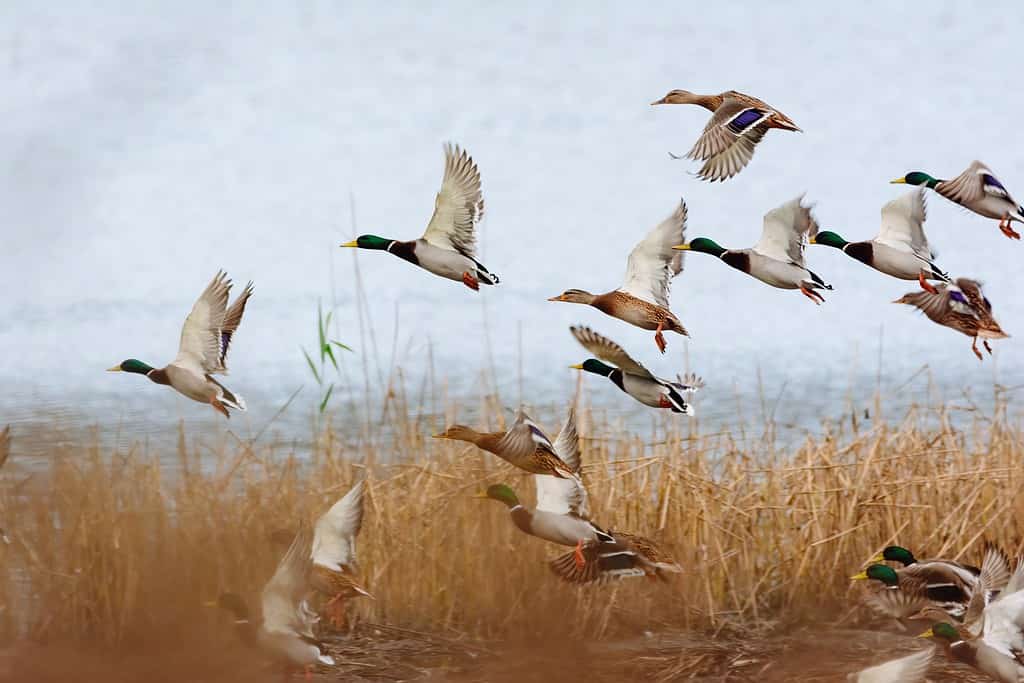
Ohio duck hunting covers four main waterfowl species: ducks, coots, mergansers, and geese.
©iStock.com/Thomas_Zsebok_Images
Ohio’s Duck Hunting Zones: Discover Where to Find Waterfowl
Ohio is split into three zones: Lake Erie Marsh, North, and South. Here are the 2022-2023 dates for each zone:
1. Lake Erie Marsh Zone
| Opening Date | Closing Date |
| Nov. 5, 2022 | Dec. 18, 2022 |
| Jan. 1, 2023 | Feb. 5, 2023 |
| Oct. 15, 2022 | Oct. 30, 2022 |
| Nov. 5, 2022 | Dec. 18, 2022 |
2. North Zone
| Opening Date | Closing Date |
| Nov. 12, 2022 | Feb. 13, 2023 |
| Oct. 22, 2022 | Oct. 30, 2022 |
| Nov. 12, 2022 | Jan. 1, 2023 |
3. South Zone
| Opening Date | Closing Date |
| Nov. 19, 2022 | Dec. 10-Jan. 29 |
| Oct. 22, 2022 | Oct. 30, 2022 |
| Dec. 10, 2022 | Jan. 29, 2023 |
If soldiers and veterans would like to hunt, they get two extra days, Oct. 1 and 2, 2022, in addition to the main season.
Bag Limits
The number of ducks you can catch each day is six. But there are some rules about which types of ducks you can bag. You cannot have more than four mallard ducks; only two can be female mallards. Also, three wood ducks, two black ducks, two redhead ducks, two canvasback ducks, one mottled duck, one pintail duck, and one scoter duck are allowed.
There are special rules about scaups too. For the first 15 days of duck season, you can only take one scaup daily, no matter where you are hunting. After that, for the last 45 days of duck season, you can take up to two scaups daily, regardless of where you are.

During the last 45 days of duck season, hunters can take up to two scaups per day, regardless of location
©CoreyMcDonaldPhotography/Shutterstock.com
General Rules and Regulations for Waterfowl Hunting in Ohio
Waterfowling isn’t an activity anyone can get into without adhering to the law. Hunters must follow government rules to avoid serious consequences like a hefty fine or losing your shooting license.
Licenses and Permits
If you want to shoot ducks and geese in Ohio this year, remember to check off a few boxes first. You need the following documents:
- A current Ohio Hunting License.
- A Federal Duck Stamp – buyable through multiple methods.
- The Ohio Wetlands Habitat Stamp (OWHS).
- Harvest Info Program (HIP).
You can sign up for these permits online, over the phone, or anywhere licenses are processed. Remember to carry all documents during all duck hunting trips.
Why Nontoxic Shot Types Are Required for Waterfowl Hunting
Using nontoxic shot types while hunting makes all the difference. Many traditional ammo types contain heavy metals like lead, which can harm both animals and humans. When birds ingest these pellets, they suffer physical damage, such as organ failure and even death. When we eat contaminated meat, these same metals can accumulate in our bodies over time, causing serious health problems.
Immediate dangers lurk around every corner too. For example, swallowing a single small lead shot could mean irreparable brain damage or death for your pet. Imagine if one of your hunting dogs accidentally consumed a pellet by mistake — it would be horrifying!
Hunters should be careful not to use bad shots that can make animals sick or even die! Bad ones have lead, zinc, copper, nickel, and tin. Some can hurt animal bodies, like livers, kidneys, and feathers. They can also leak out and harm bugs and plants. To stay safe, find only good shots okayed by the U.S. Fish and Wildlife Service (USFWS).
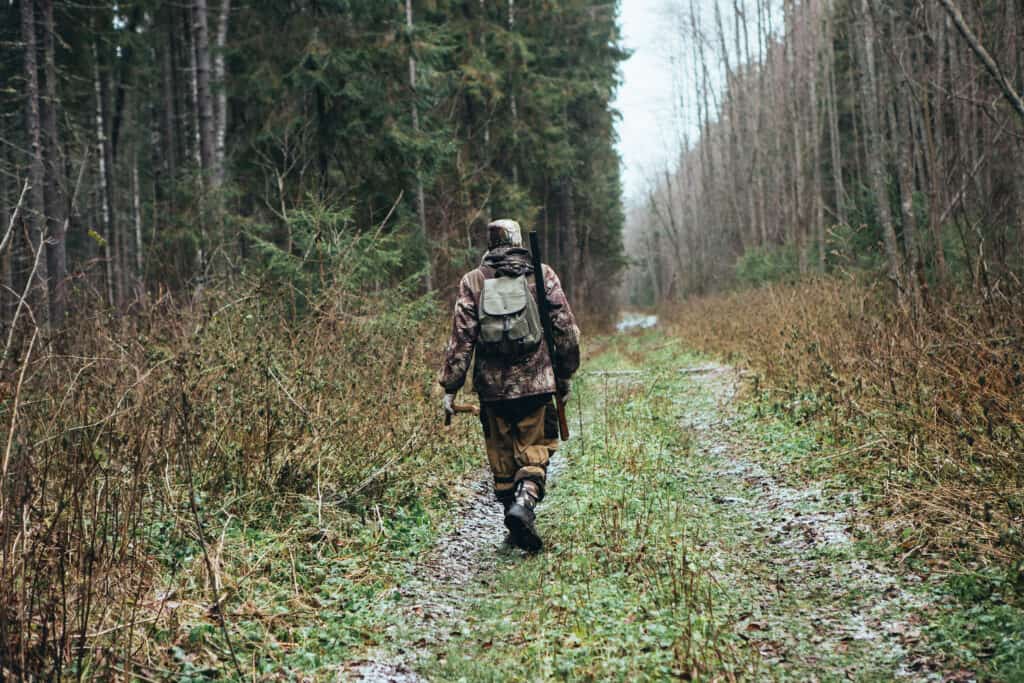
Traditional ammunition containing lead poses risks to animals and humans. Ingesting lead pellets can cause severe harm and even death.
©Scharfsin/Shutterstock.com
Top 10 Approved Nontoxic Shot Types for Waterfowl Hunting in the U.S.
| Approved Shot Type | Material Composition |
| Bismuth-tin | Bismuth comprises 97% of the composition, while tin accounts for 3%. |
| Copper-clad iron | Comprises up to 44.1% copper cladding, while the iron core ranges from 84% to 56.59%. |
| Corrosion-inhibited copper (CIC) | The material comprises over 99.9% copper and is coated with thermoplastic fluorescent powder and benzotriazole. |
| Iron (steel) | iron and carbon |
| Iron-tungsten | This shot contains tungsten combined with at least 1% iron in any ratio. |
| Iron-tungsten-nickel | Contains at least 1% iron and varying amounts of tungsten. It can have up to 40% nickel content. |
Tungsten-bronze | The first composition comprises 51.1% tungsten, 44.4% copper, 3.9% tin, and 0.6% iron. The second composition boasts a higher tungsten content, 35.1% copper, 3.9% tin, 60% tungsten, and 1% iron. |
| Tungsten-iron-copper-nickel | Alloy consists of 40-76% tungsten, 10-37% iron, 9-16% copper, and 5-7% nickel. The combination displays a remarkable level of variability and complexity. |
| Tungsten-matrix | 95.9% tungsten, combined with an intriguing 4.1% polymer. |
| Tungsten-polymer | Tungsten comprises 95.5% of the composition; Nylon 6 or Nylon accounts for the remaining 4.5%. |
Tips for Successful Duck Hunting in Ohio
Duck hunting requires skill, knowledge, and planning. Here are tips to improve your chances of getting a good catch.
1. Scout Before Hunting
Explore the areas beforehand to know where the ducks gather and feed. Look for fields and waterways with good numbers of ducks, considering factors such as wind direction and distance from the hunting site. Proper preparation will significantly boost your success rate.
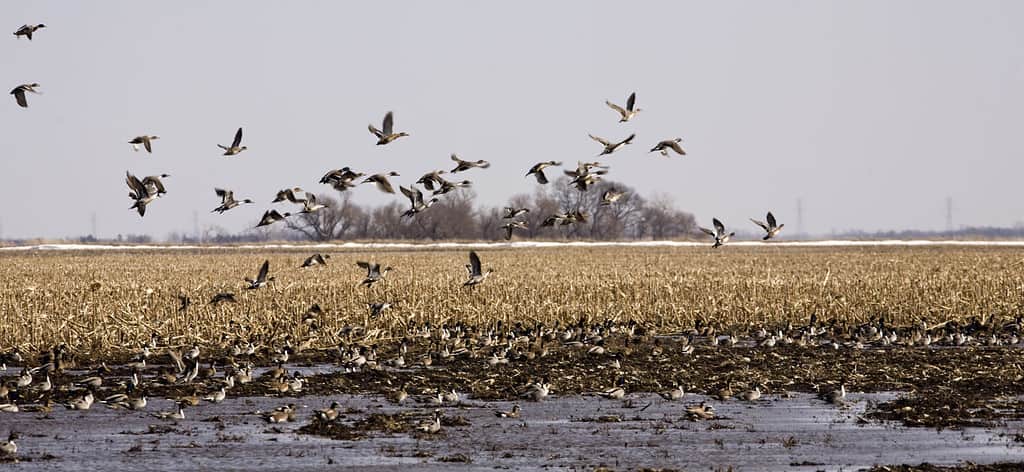
Consider factors such as wind direction and distance from the hunting site to significantly boost your success rate.
©Patrick Ziegler/Shutterstock.com
2. Maintain Compliant Shots
Again, federal and state laws require specific shot sizes depending on the type of duck and the hunting zone. Comply with these requirements and purchase appropriate ammo before hitting the field. Non-compliant shots can result in fines or jail time, not to mention putting other individuals at risk.
3. Utilize Proper Camouflaging Techniques
Blending seamlessly into your surroundings is vital for a successful hunt. Camouflage your boat, blind, and attire with natural elements found locally. When placing decoys, arrange them randomly instead of in neat rows to mimic a genuine scene. Adjust your setup according to weather conditions, light levels, and wind directions.
4. Learn Advanced Shooting Skills
Developing proper form and technique takes time and dedication. Practicing shooting while seated, kneeling, or standing will give you more options when aiming during the actual hunt. Moreover, experimenting with gun weight distribution, stock length, and cast-off measurements can enhance comfort and effectiveness. Lastly, learning to lead targets properly can significantly improve accuracy.
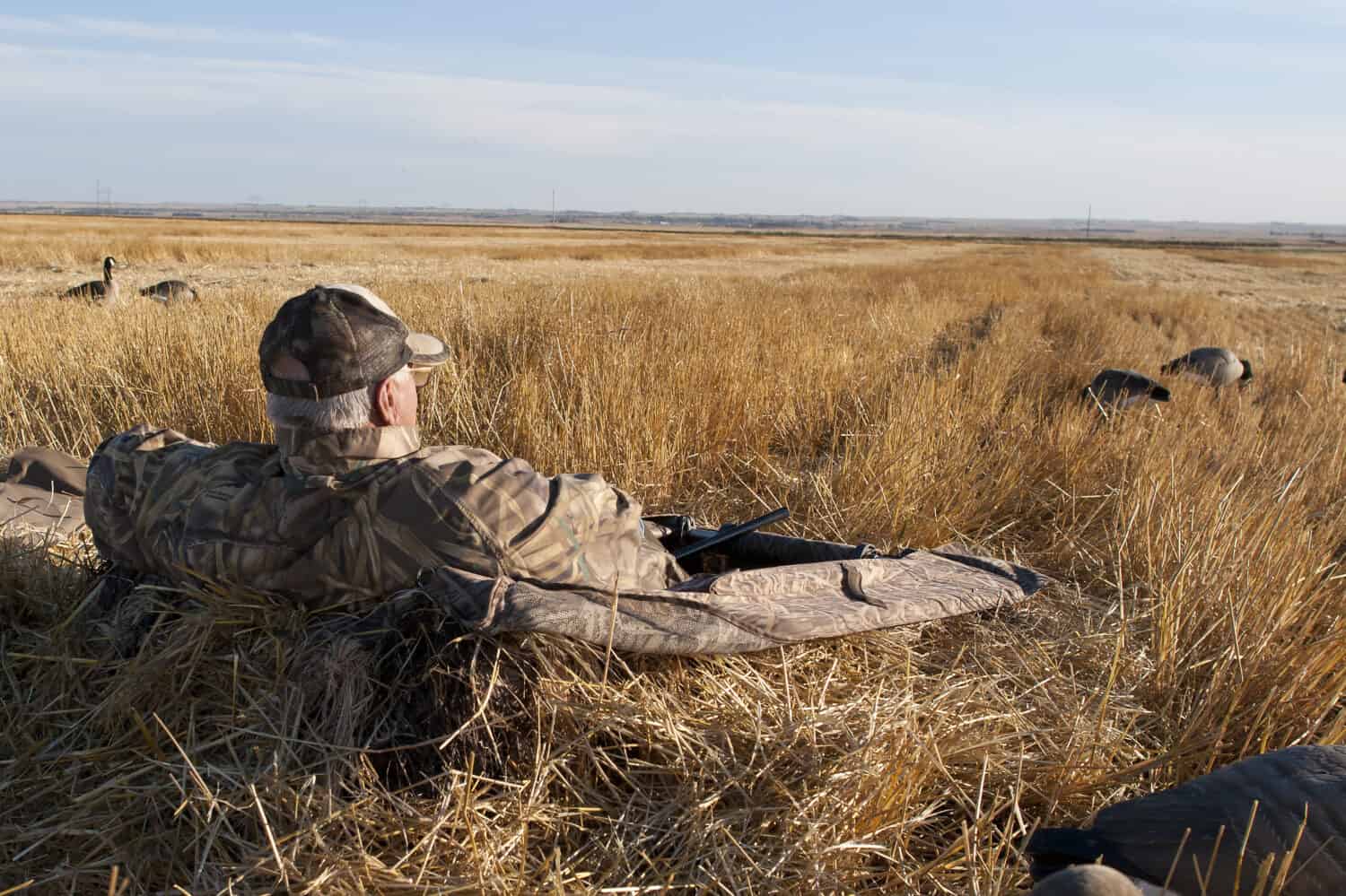
Mastering proper form and technique requires patience and commitment. Fine-tune gun weight distribution, stock length, and cast-off measurements for improved comfort and effectiveness.
©Steve Oehlenschlager/Shutterstock.com
5. Hunt With the Wind
When you hunt with the wind crossing your face or quartering from behind, the ducks will land into the wind and provide you with a broader target area; this increases your chances of making a clean shot, leading to a more successful hunt. Always remember to adjust accordingly based on the wind direction and speed.
6. Clear Ice Pieces with Landing Nets
If you plan to hunt during winter, bring a landing net to remove floating ice from your open water holes. This step ensures safety and improves visibility while waiting for ducks to come by. Plus, it helps keep the surroundings clean and free of debris.
7. Stick Around Late for Migrating Flock
During peak migrations, stay out longer to catch later waves of ducks heading south. Many flocks prefer to stop and rest after traveling long distances, meaning they could pass over your location in the late mornings. Waiting around could increase your chances of bagging more birds.
8. Limit Your Duck Calls
A duck call may seem simple, but it significantly brings ducks close enough to shoot. However, don’t fall victim to excessive calling; this often sends them running away from danger. Instead, learn the perfect timing to draw their attention without scaring them off. Also, resist the urge to call once they start descending onto your decoys — no need to ruin everything!

Avoid overcalling and stay silent when they approach your decoys to avoid sending them away.
©Brian A Smith/Shutterstock.com
9. Bring Along a Retriever Dog
A reliable companion can save you time and effort searching for fallen birds. Retriever dogs have incredible noses and retrieve skills, which makes them ideal partners. But note that training takes patience, persistence, and dedication. An untrained or poorly behaved retriever won’t only spoil your hunting experience but might risk getting hurt. Be cautious and choose wisely.
10. First Shot Counts: Trailer with Care
Ensure that your first attempt targets the farthest bird (the “trailer”); this allows you to take advantage of momentary confusion caused by shotguns and fire a follow-up shot toward flapping birds before they regain composure and escape. If done correctly, you might even bag two birds with one shell!
FAQs about Duck Hunting in Ohio
Where Can I Hunt Waterfowl in Ohio?
You can hunt waterfowl on both public and private lands in Ohio. However, you must have permission from the landowner or manager first. Check out the Ohio Department of Natural Resources (ODNR) website for public hunting spots. Remember that some areas may have extra permits required or special regulations.
What are the Legal Shooting Hours for Waterfowl Hunting in Ohio?
The legal shooting hours for waterfowl hunting in Ohio vary depending on the species. Generally speaking, shooting hours are one-half hour before sunrise until sunset. However, the shooting hours are from sunrise to sunset during the early teal season. You can always verify the dates on the ODNR website or via printed materials available yearly.

Waterfowl hunting shooting hours in Ohio are typically from one-half hour before sunrise until sunset, but during the early teal season, it is from sunrise to sunset.
©Roman Khomlyak/Shutterstock.com
How Do I Identify Waterfowl Species in Ohio?
Identifying waterfowl species before you shoot them is essential to ensure responsible, safe, and lawful hunting practices. Use visual resources like guides or online courses to aid recognition. Practice identifying waterfowl while they fly overhead — especially during migration periods. Learning their unique quacks and other vocalizations will aid further identification. Use binoculars or spotting scopes to examine bill length, neck shape, head shape, leg color, and plumage markings.
How Do I Start Waterfowl Hunting in Ohio?
If you’re new to waterfowl hunting in Ohio, there are several ways to learn how to get started. These include:
- Taking a Hunter Education Course: Complete a basic certified hunter education class. Find upcoming classes near you at Ohio Boater Safety Courses.
- Finding a Mentor: Experienced hunters make great mentors. Connect with others who share your passion and ask them to show you the ropes. Join local hunting clubs or attend events to meet other enthusiasts.
- Joining a Duck Hunting Club: Joining a hunting club provides fellowship opportunities and shared experiences. Many Ohio clubs focus on ducks and geese, so find one today.
- Attending Learning Events: Trapping demonstrations, game cooking workshops, firearms training sessions — all these activities and more are available around the state.
What Difficulties Might I Face While Waterfowl Hunting in Ohio?
You may encounter these challenges while hunting waterfowl in Ohio: bad weather, dangerous water levels, difficult terrain, overcrowded areas, limited shooting opportunities, and conflicting priorities among fellow hunters.
In severe instances, these hurdles could lead to hypothermia, drowning, falls, accidents with firearms, or conflicts with others. Thus, preparation for the unexpected is vital for enjoying a productive hunt without incident.
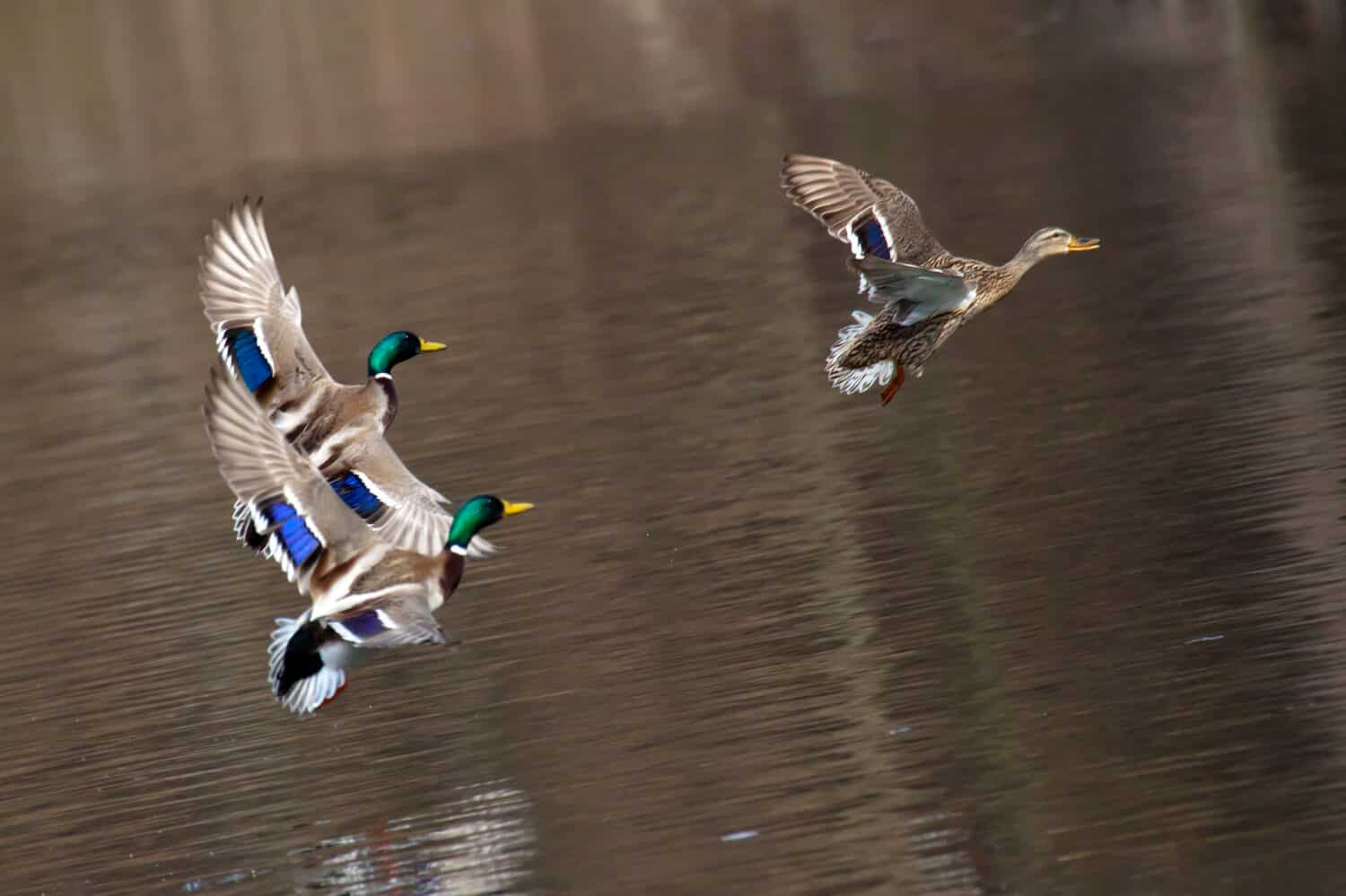
Preparation for the unexpected is vital for enjoying a productive hunt without incident.
©Olexandr Panchenko/Shutterstock.com
How Can I Mitigate Potential Hazards While Waterfowl Hunting?
Follow these precautions while waterfowl hunting in Ohio:
- Check local weather patterns.
- Familiarize yourself with the topography ahead of time.
- Be mindful of differing opinions among fellow hunters.
- Acquire sufficient gear that fits well and shields against environmental elements.
Following these precautions will help maintain a safer and more pleasurable duck hunting trip.
How Can I Clean and Process Waterfowl After the Hunt?
Properly tending to fresh game is crucial to prevent spoilage. Field dressing ducks involves humanely dispatching and preparing them for transportation back to camp. This process entails removing the innards and creating ample space to maintain the freshness of your catch until you can thoroughly wash and prepare them later.
Upon returning to your base, it is important to meticulously gut, clean, and pluck the ducks for storage. Additionally, you may consider preserving their carcasses to create flavorful soup stocks, broths, or other delightful culinary ingredients!
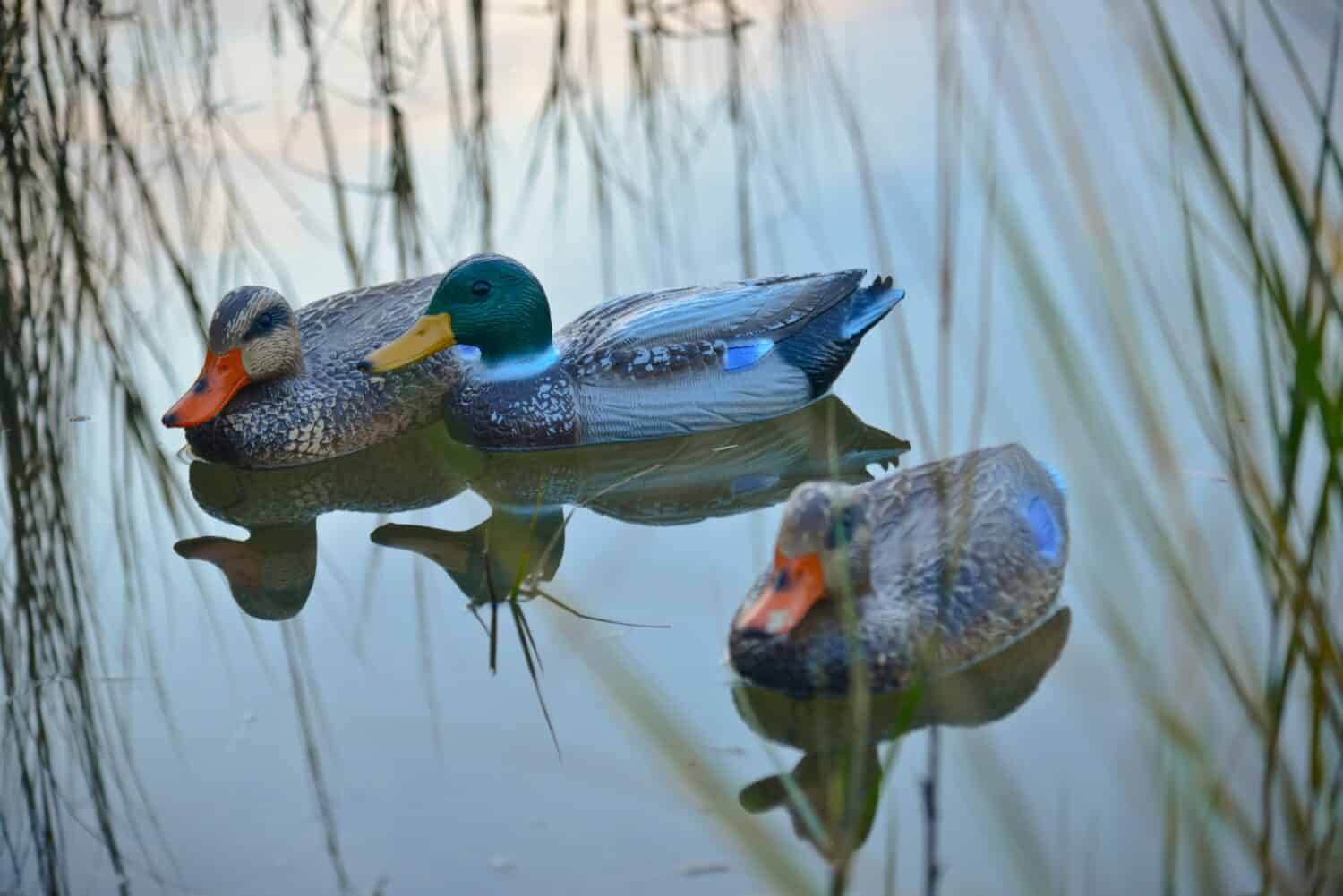
Properly handling fresh game is essential to prevent spoilage for transportation back to camp.
©Aqeela_Image/Shutterstock.com
Reflecting on Ohio’s Duck Hunting Season
Duck hunting season in Ohio gives hunters an exciting opportunity to practice their hobby. Following rules keeps birds safe and allows hunters to have fun. Knowing which areas to visit at specific times for different kinds of water birds will help increase hunting success and enjoyment.
Ensure you have the legal documentation. Non-poisonous ammunition must be used due to its positive effect on animal and human health. Proper planning, concealment, marksmanship, and attention to weather conditions maximizes outcomes.
Avoid overhunting in a single location or hunting during bad weather. By utilizing these guidelines, hunters gain advantages over unprepared competitors, resulting in a satisfying and legal harvest. Remember, always prioritize respect for nature and responsible resource management.
The photo featured at the top of this post is © CLP Media/Shutterstock.com
Thank you for reading! Have some feedback for us? Contact the AZ Animals editorial team.






